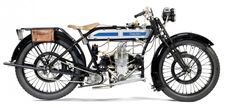
DOUGLAS Motorcycle PDF Manuals
History of Douglas Motorcycles
Above on the page there are several PDF Manuals for DOUGLAS Motorcycles, Scooters.
Douglas has always been in opposition to the entire British motorcycle industry.
While other firms were forging singles, Douglas stubbornly produced motorcycles with boxer engines.
But even here this company did not look for easy ways.
Opposites had a longitudinal layout, which was very different from our usual designs.
Fitting a longitudinal boxer into a motorcycle frame is troublesome.
A painfully large base is obtained, controllability in this case is not for everybody.
Despite this strange feature, Douglas motorcycles managed to tread a path to the hearts and wallets of buyers.
The company produced the first motorcycle in 1906.
It is impossible to say that people were crammed for Douglas motorcycles, but the demand was quite stable.
The company lived a measured life, motorcycles were sold, engineers perfected the art of installing a longitudinal boxer on a motorcycle.
A sharp turn happened in the early thirties.
German products began to get into Britain in the form of BMW motorcycles, Zundapp and all with opposites, but not the same as those of the British.
Things were not going well for the company, they did not want to spend extra money.
However, the chief engineer of the company, Eddie Holk, disobeyed the order and, taking Jack Clapham as an assistant, began the development of a new motorcycle with a transverse opposition.
To make it as easy as possible for the new motorcycle to go into mass production, Eddie Holk tried to use components from production motorcycles as much as possible.
The prototype was ready by 1935 and was presented to the high authorities.
The high management remained quite a novelty and it was decided to take a chance, launch the motorcycle in a series.
For the novelty, they chose the sonorous name Endeavor. Douglas Endeavor was very different from the standard products of the company, but in some places it resembled German technology.
Endeavor boxer engine with transverse cylinders, displacement of 500 cc, power of 10 hp, four-speed gearbox.
A novelty for the British motorcycle industry is a driveline.


